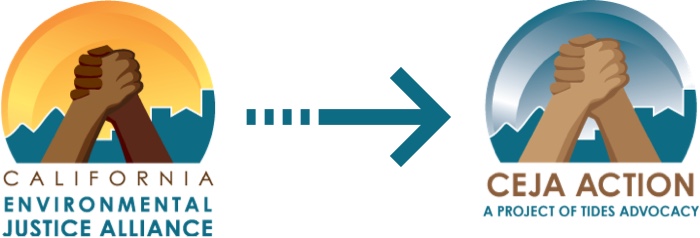We can’t wait for Washington’s Green New Deal. California needs a Just Transition now.
By Gladys Limón of California Environmental Justice Alliance & Miya Yoshitani of Asian Pacific Environmental Network
Originally published in Sacramento Bee’s California Forum
As the deadliest wildfire in a century raged in Butte County last year, leaving 85 people dead and thousands without homes, hundreds of young people filled the halls of Congress to demand a Green New Deal.
This sense of urgency is long overdue. For decades, our alliance has brought together parents, students, workers and elders living next to oil fields, fracking wells, dirty power plants and massive refineries to stop California’s biggest polluters from poisoning our families and destabilizing our climate.
Five years ago, in the Kern County community of Arvin, a gas pipeline leak forced dozens of families out of their homes. First, people complained of headaches, strange smells and fainting. Then flames began shooting out of their outlets and inspectors found explosive levels of gas.
Neighbors began organizing with the help of Committee for a Better Arvin. Kern County is the largest oil-producing county in the U.S. Oil pumps and gas wells dot the landscape between homes, schools and churches.
“It’s so sad, with schools so close by and kids walking to school where all this gas is being released,” said Estela Escoto, chairman of Committee for a Better Arvin.
Last year, despite the oil and gas industry’s propaganda, Estela and Arvin residents won over the City Council and unanimously passed an ordinance that prevents oil drilling near homes and schools.
“If we don’t have clean air, clean water, we don’t have anything,” says Estela. “We don’t have health.”
The people of Arvin are not alone. In frontline communities across the state and country, people have long organized to make sure that future generations can grow up without asthma, respiratory illnesses or exposure to dangerous chemicals and endocrine disruptors. All of these result from living next to oil refineries and dirty gas power plants.
Our communities are tired of just surviving. We are fighting for a future where we can thrive.
The New Deal of the 1930s remade our economy through public works projects like the Tennessee Valley Authority, which brought infrastructure, jobs and power to millions of people, starting in isolated rural areas. Today, we need a Green New Deal that will stabilize the climate and build local regenerative economies, starting in the neighborhoods most impacted by racism, poverty and pollution. The racial justice element is important because the original New Deal excluded millions of black workers and families from its benefits.
A Green New Deal means taking bold, inclusive steps to divest from a fossil fuel economy that is destroying our health and environment. It means phasing out oil and gas production. It means saying no to multibillion-dollar bailouts for investor-owned utilities and skyrocketing electric bills for the rest of us.
In addition to ending bad things, a Green New Deal means building new ways to power our neighborhoods that ensure safety, bring good jobs and stabilize the climate.
In the 21<sup>st</sup> century, we can do much better than pour billions into patching up an antiquated energy infrastructure that relies on nearly 200 dirty gas plants to generate electricity and carry it across dangerously long distances. With a Green New Deal, we can build distributed energy resources that generate and store clean, renewable power locally and regionally.
In places like Oakland and Richmond, people have already begun to imagine what this transformation could look like. We’ve developed plans to turn municipal buildings, apartments, schools, churches and community centers into sites for clean renewable energy generation. This brings down energy costs for entire neighborhoods.
Our members have also proposed creating resilient microgrids and energy storage in places already designated as local evacuation centers. This will help communities with the fewest material resources to weather increasingly devastating climate disasters.
As we increase clean energy sources, we can unplug dangerous gas plants and ensure that workers in the fossil fuel industry transition into jobs in the renewable energy economy. That means training and hiring thousands of workers to build the infrastructure of community-owned solar, wind and energy storage public works projects. These must be built in every city, but especially in places like Richmond and Wilmington, where people have been unfairly burdened by dirty fossil fuels.
Most importantly, we must put decision-making power back in the hands of workers and communities – and take power away from corporations that put profits over safety.
California has a head start. Local clean energy aggregators have sprung up in counties across the state so that people can decide where they get their power. Last year, our state committed to achieving 100% renewable energy by 2045. Frontline communities helped create the Solar on Multifamily Affordable Housing (SOMAH) program to invest $1 billion to bring solar power to working-class renters. The California Public Utilities Commission agreed to fund community shared solar projects, which put clean energy in our neighborhoods.
Such steps are crucial, but we need a full commitment and a comprehensive strategy. The Golden State must lead the way. It’s time for a Green New Deal in California.

